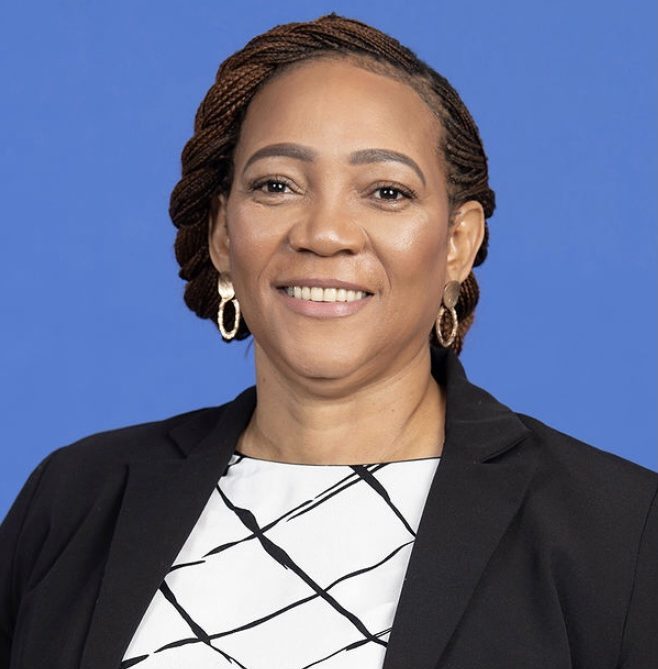Very little was previously known about how the United States surreptitiously dethroned Britain as the epicentre of the international monetary system in the 1940s, clearing the way for the US dollar to replace the British Pound as the king of all the world’s currencies.
The behind-the-scenes details of the US-orchestrated geopolitical financial coup are chronicled in a 2013 book, The Battle of Bretton Woods, authored by U.S. economist Benn Steil, one of the most authoritative storytellers on the historic Bretton Woods Conference, which created the monetary system that still dominates the world to this day.
In his book, which became a bestseller, Steil narrates an intriguing story about a plan hatched by the then little-known US Treasury official, Harry Dexter White, to engineer the emergence of the US dollar as the global reserve currency, at the Bretton Woods Conference that took place from 1 to 22 July 1944.
The gathering, attended by 730 delegates from 44 countries, with the main objective to establish a new global monetary system. It was at this conference that the institutions of international finance the International Monetary Fund (IMF) and the World Bank were established.
At the Bretton Woods, a scenic mountain resort in the U.S. state of New Hampshire, the British delegation was led by legendary British economist John Maynard Keynes, who found himself in a duel with White, as Americans moved in to take control of the global monetary system.
Keynes came to Bretton Woods riding on a huge reputation as a negotiator and economic diplomat, having shot to fame for his brand of macroeconomics, known as Keynesian economics, credited for ending the Great Depression in the 1930s.
The Bretton Woods conference was preceded by trade wars, recessions, and two world wars (WW1 and WW2), which bankrupted many nations including superpower Britain. For all his legendary aura and negotiation skills, Keynes was unable to counter the Americans, who were determined to exploit their newfound economic power while Britain, was a superpower in decline, helplessly watching its empire collapsing.
At the time the conference happened, the U.S. had already surpassed Britain as the world’s largest economy while Britain had run out of cash fighting the Second World War. Furthermore, the US had become the world’s largest creditor nation, and controlled two-thirds of the world’s gold.
The U.S. had built its wealth on the back of being the main supplier of weapons and other goods to Allied nations, during World War 1 and World War 2. During those days most countries paid for goods in gold, enabling the US to accumulate the bulk of the world’s gold while other countries saw their gold stockpiles being severely depleted.
The British Pound, which was pegged to the gold, was regarded as global reserve currency, but because the U.S. had more gold than any other country in the world, it was well placed to replace the British Pound with its own currency.
On behalf of the British, Keynes negotiated gallantly for a new reserve currency, which he named “Bancor”, to be adopted, but he was outmuscled by the financially stronger Americans. The result was that the U.S. dollar has been a reserve currency since the Bretton Woods conference nearly 80 years ago. As a reserve currency, the U.S. dollar is always at the centre of cross-border business deals. For example, if a South African pineapple farmer wants to sell pineapples to a Chinese food retailer, the retailer pays the farmer, not in South African rand or Chinese yuan, but in U.S. dollars. Both the farmer and retailer are not US-domiciled businesses, but the transaction is conducted in U.S. dollars, not in currencies of their countries.
Due to the prominence of the US dollar in global finance and trade, many countries have no option but to stockpile US dollars, by selling exports and in turn use the dollars to purchase of imports. Without US dollars, it is difficult to buy imports. However, the Americans have an advantage of printing US dollars to buy imports, hence the U.S. is the world’s largest importer of goods.
The world economy runs on US dollars and central banks, according to the International Monetary Fund’s data, hold the US dollar in huge quantities relative to other currencies. The greenback accounts for about 58.4% of currency reserves, followed by euros at 20.5%, Japan’s yen at 5.5%, the British pound at 5% and China’s renminbi at 2.7%.
However, powerful developing nations are concerned about the US’s outsized influence on the global economy. China, the world’s largest exporter and the holder of the world’s largest currency reserves ($3.46 trillion), has been agitating for a new Bretton Woods system, challenging the US dollar in almost a similar way the Americans challenged the British Pound.
The East Asia economic giant and Russia, the two most powerful countries in the 5-nations BRICS bloc, have been pushing for drastic overhaul of the global monetary system to make it fairer, inclusive, and equitable.
BRICS which also includes India, Brazil, and South Africa, accounts for 42% of the world’s population and 24% of the world’s gross domestic product (GDP), but collectively hold less than 15% of voting rights in the IMF and World Bank.
The bloc, which will hold a summit in Johannesburg from 22 to 24 August, is in the process of inviting more members to join it, which will make it a stronger challenger to the highly industrialised G-7 nations, which make up 46% of the world’s GDP. So far 19 countries have expressed interest in joining an enlarged BRICS, and there are reports that Turkey, Iran, Saudi Arabia, Egypt, Algeria, Argentina, Indonesia, United Arab Emirates, Bahrain, and Indonesia are among countries that are eager to be part of the bloc.
There has been heightened interest in BRICS from developing nations ever since the US and European Union (EU) imposed heavy sanctions on Russia over its 17-month invasion of Ukraine. Last year, the US and EU seized about $300 billion of Russia’s foreign currency reserves, built up mainly from sale of gas and oil exports.
Although many countries are against Russia’s invasion of Ukraine, they are equally fearful of US’s penchant for weaponising the US dollar to settle international disputes. This has also led to a move towards the de-dollarisation as developing countries are exploring bilateral and multilateral measures to promote non-dollar trade amongst themselves.
West African countries are piloting the Pan-African Payment and Settlement System (PAPSS), which enables participating countries to trade in local currencies without using the US dollar. PAPSS is expected to be rolled out across the continent following the pilot. Brazilian President Lula da Silva has proposed creation of a common currency for South American countries, while Pakistan, China, Russia, and Saudi Arabia have also expressed interest in conducting trade in their own local currencies.
The biggest non-dollarisation drive is being engineered by the BRICS. The bloc is discussing plans to introduce a reserve currency that is backed by commodities like gold and oil. To give credence to their intentions, BRICS nations are accumulating gold reserves, leading to speculation that the currency will be backed by gold. If the currency is gold-backed, it will technically be interchangeable with gold, and by extension gold itself.
All eyes will be on the upcoming BRICS summit, where the reserve currency will be discussed. The Americans may get a taste of the medicine they administered to the British at Bretton Woods, if the BRICS nations go ahead with creating an alternative reserve currency that will challenge the US dollar.



